Swamp Birds: American Woodcock and Wilson’s Snipe
Updated: Jan. 25, 2023
When the American woodcock and Wilson's snipe are not lurking in wet, marshy places, these odd birds can be spotted dancing in the sky.
Meet the American Woodcock and Wilson’s Snipe
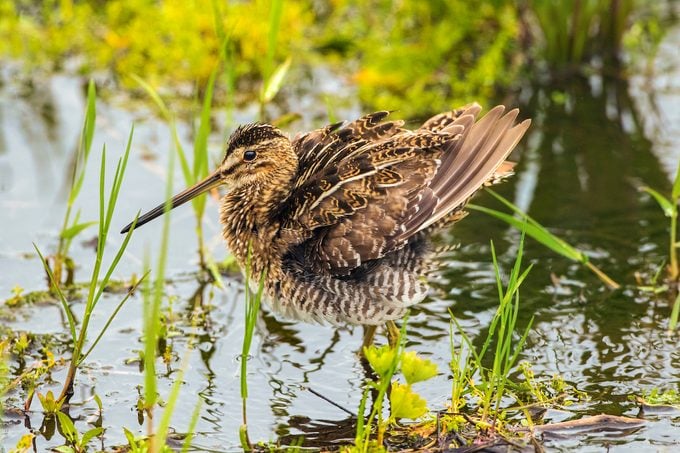
Timberdoodle. Night partridge. Mudbat. Labrador twister. Marshdoodle. Bogsucker. No, we aren’t talking about imaginary creatures from a fantasy novel. Those are real nicknames for two of North America’s most remarkable birds, the American woodcock and Wilson’s snipe.
These two are alike in having round bodies, short legs, short necks, big heads and very long, straight beaks. Technically the woodcock and snipe are classified as members of the sandpiper family, but you won’t find them on sandy beaches. Instead, they hide in marshes and swamps or deep in the woods. It takes a serious effort to get to know them.
Range and Habitat: Secretive, Solitary Sulkers
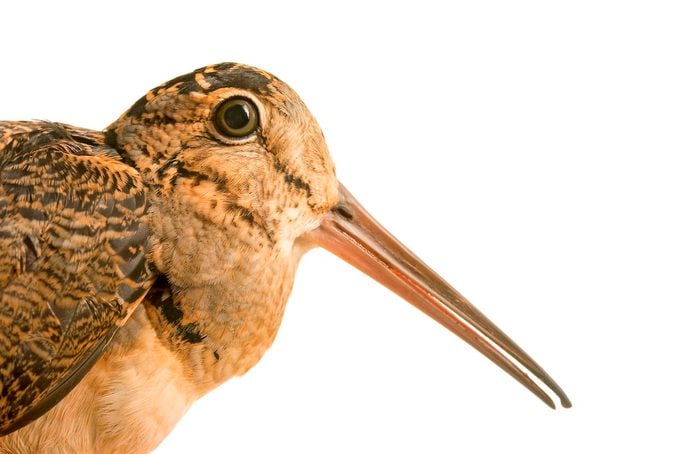
Wilson’s snipes lurk in marshes and wet meadows, sometimes venturing out along edges of muddy ponds; American woodcocks hide on the ground inside leafy forests and thickets by day, venturing out into overgrown fields at night. Even when they’re out in the daylight, these birds are difficult to spot. They wear cryptic patterns of buff, brown and black. When they sit still, their camouflage blends in perfectly against a background of dry marsh grass or dead leaves on the forest floor.
Although usually unseen by most people, American woodcocks are common in the eastern states and southeastern Canada, mostly east of the Great Plains. Wilson’s snipes are found from coast to coast across Alaska, Canada and the northern states in summer, migrating south to spend winter throughout the central and southern states and deep into Mexico.
Learn everything you need to know about a killdeer bird.
What Do American Woodcocks and Wilson’s Snipes Eat?
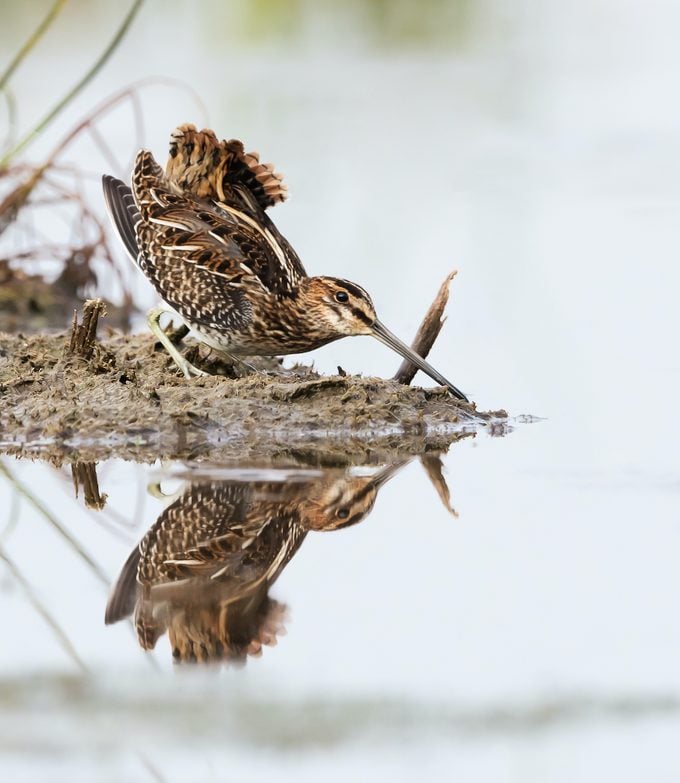
The long, straight bills of snipes and woodcocks provide a clue to their feeding behavior. They locate food with their sense of touch. The tip of the bill is very sensitive, so when a bird plunges it into the mud, it can feel earthworms, grubs, snails and small creatures moving around. And the upper mandible of the bill is flexible, so these odd birds can open up their bills just at the tip to grab something deep underground.
With eyes located high on their heads, they can watch for danger even when their bills are pointing down.
Quiz: How many shorebirds can you identify?
Flamboyant Fliers: Dances and Sounds
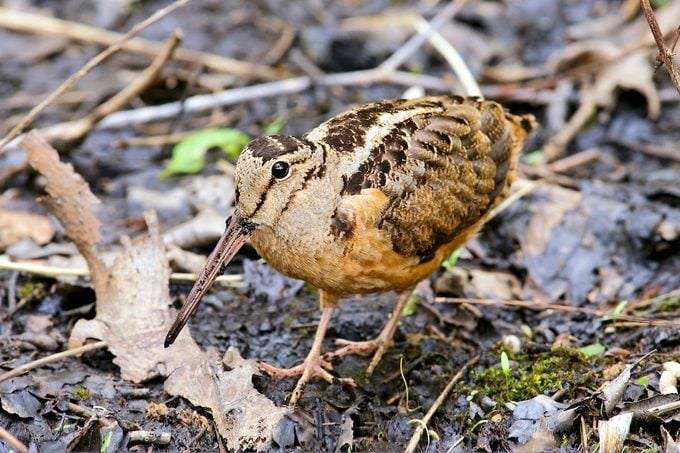
At first glance, they don’t look like skilled fliers. If you surprise a woodcock on the ground, it whirs off through the woods on short, rounded wings. The snipe leaps up from the mud and zigzags away as if it can’t decide which way to go. Both species seem reluctant to fly most of the time.
But on nights in early spring, they perform impressive sky dances. The male woodcock starts his performance around dusk by standing on an open patch of ground and calling a loud, buzzy pzeent! several times per minute. Then he abruptly launches into the air and flies almost straight up, rising more than 100 feet above ground before he levels off. Then moving in a slow, fluttering circle against the darkening sky, he makes a thin, high-pitched twittering sound, punctuated with sharp chirps.
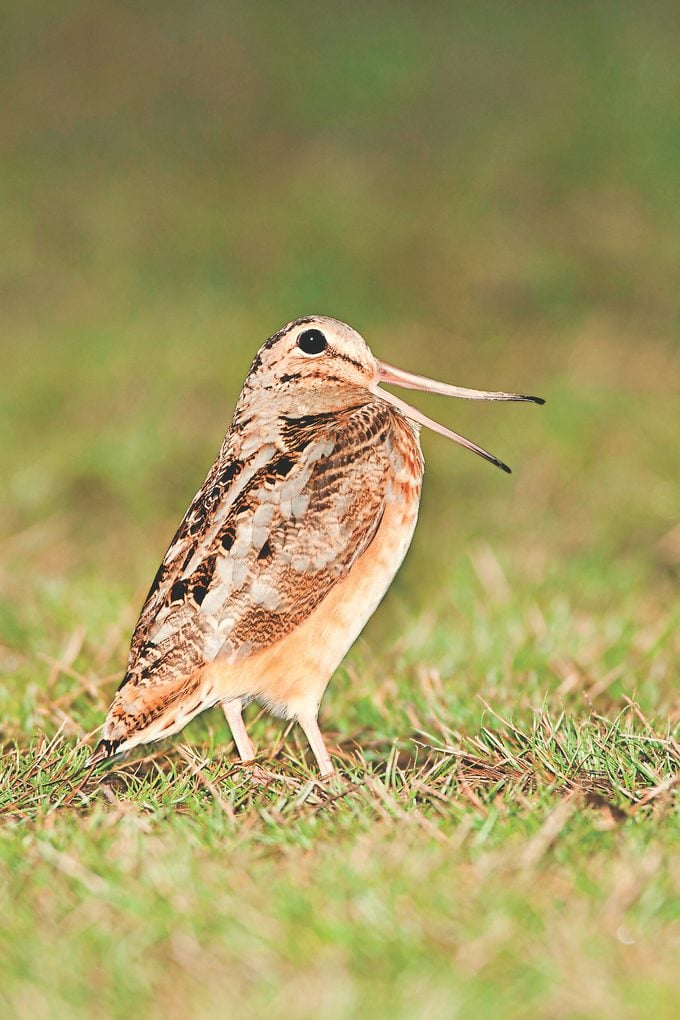
After a minute or two he abruptly stops and dives toward the ground, landing exactly where he started, and begins making pzeent notes again. He may do this dozens of times during the first part of the night and again near dawn.
Wilson’s snipes are faster fliers than woodcocks. The male may perform day or night, but even in daylight he can be difficult to spot as he zooms around the sky in huge circles. He’s easy to hear, though, because every so often he goes into shallow dives while making a loud, hollow, quivering trill, often referred to as winnowing. The whole presentation isn’t as fancy as the woodcock’s artful display, but it may last longer. The male snipe sometimes zips around, winnowing, for more than half an hour at a time.
See more elaborate bird mating rituals.
Feather Sounds
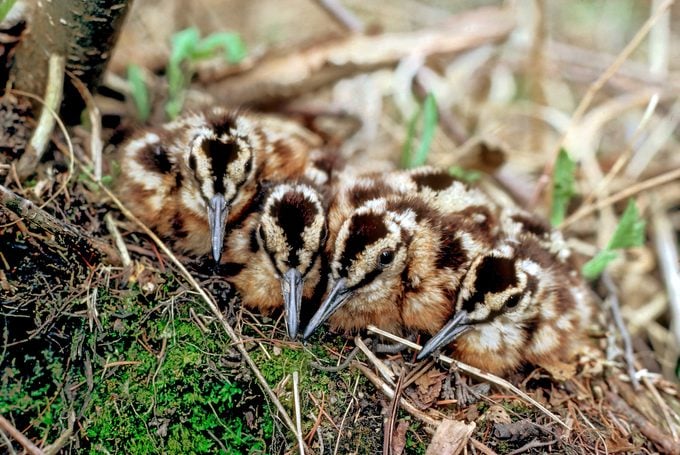
As if the aerial displays of these birds weren’t bizarre enough, they make sounds in flight not with their voices, but with certain feathers. On the male woodcock, the three outermost feathers on each wing are very narrow. They vibrate in flight to make a twittering sound. On the snipe it’s the outermost tail feathers that are shaped to vibrate. The bird can control the airflow across those feathers by the way it beats its wings, creating the loud winnowing notes that echo across the marshes.
In their own ways, woodcocks and snipes dance in the sky to attract and woo mates and to assert their claims to a nesting territory. The flight displays and musical feathers are meant to impress others of their kind. But they’re also impressive for humans who are lucky enough to witness these elegant acts.
Next, find out if mourning dove feathers and wings make noise?




















